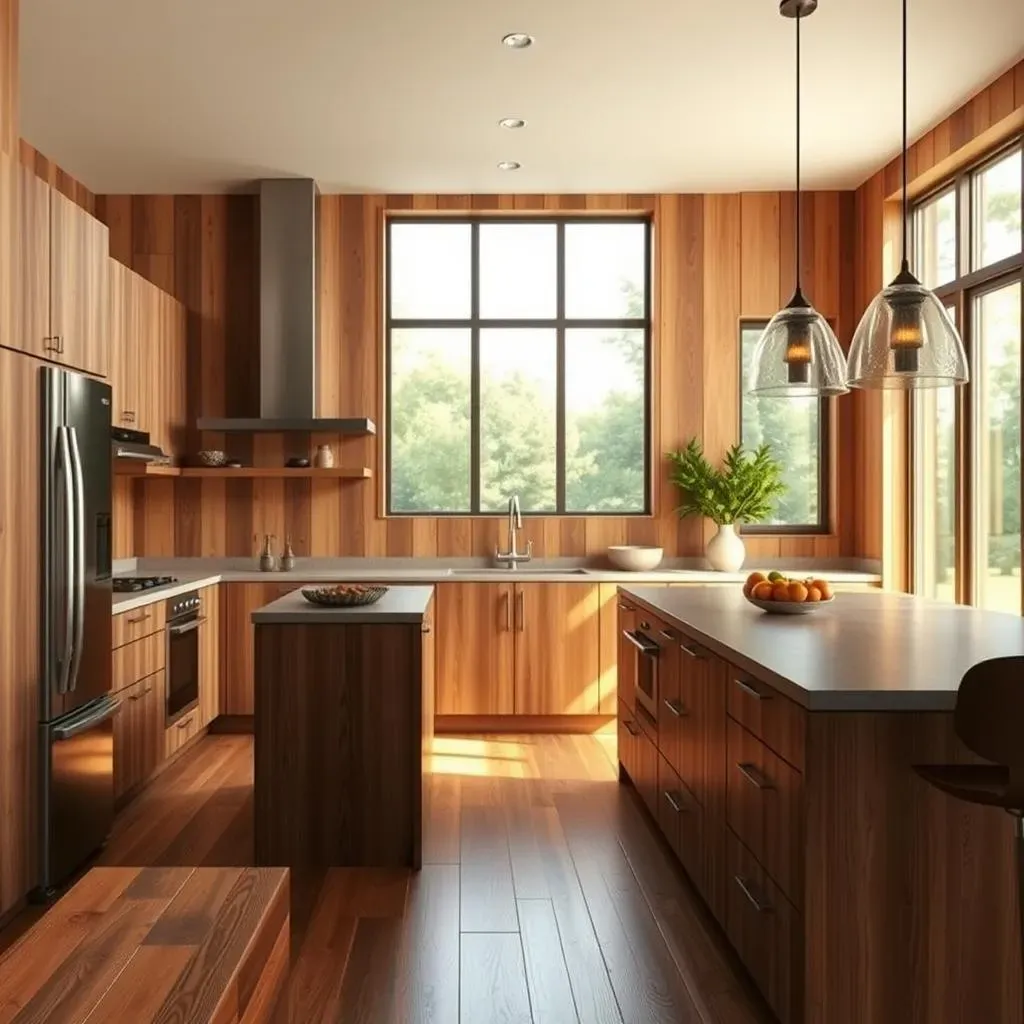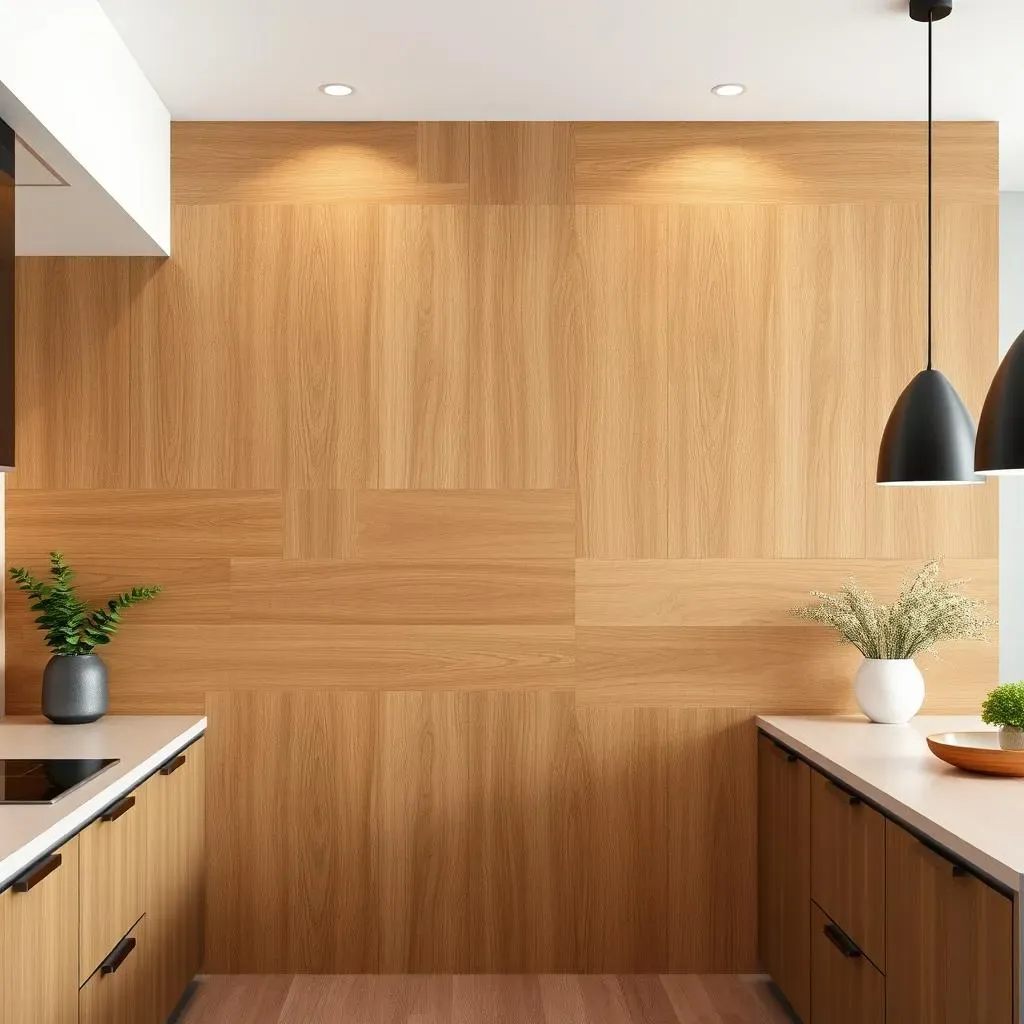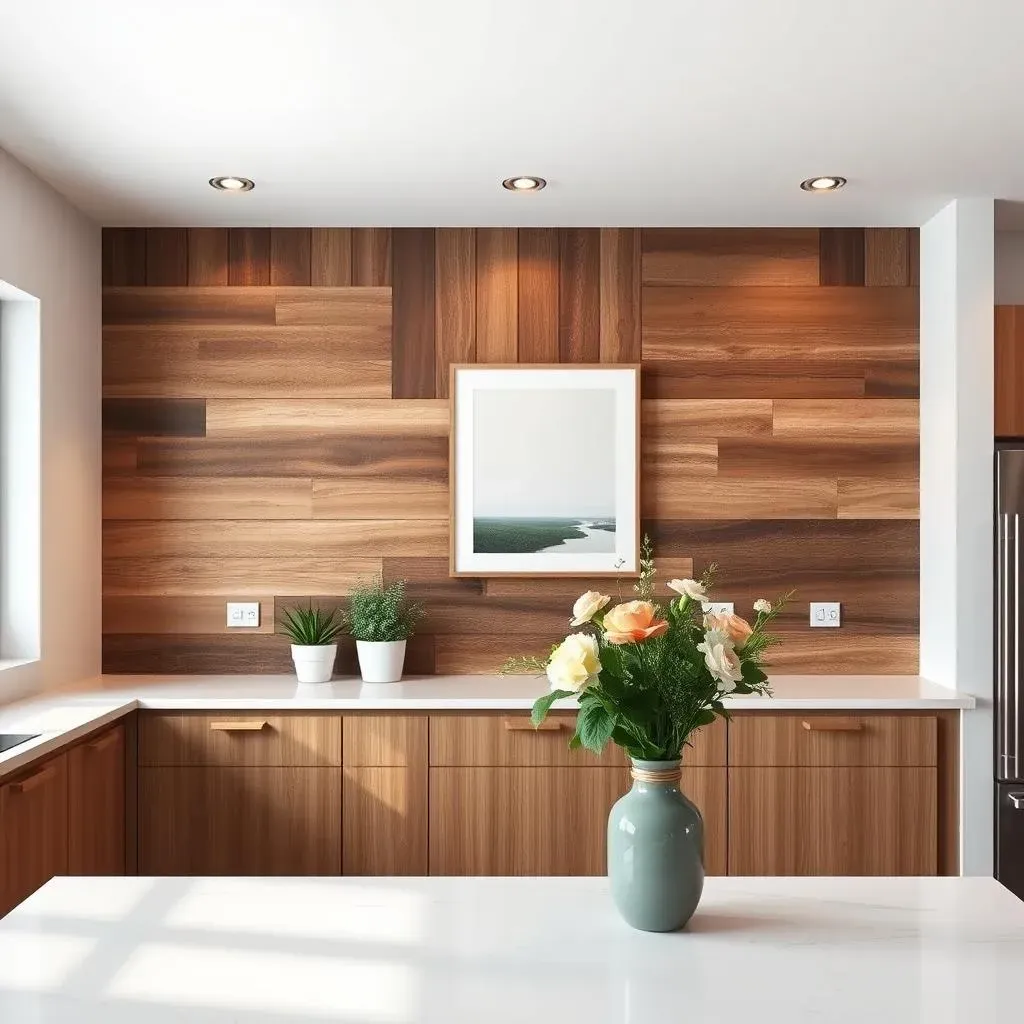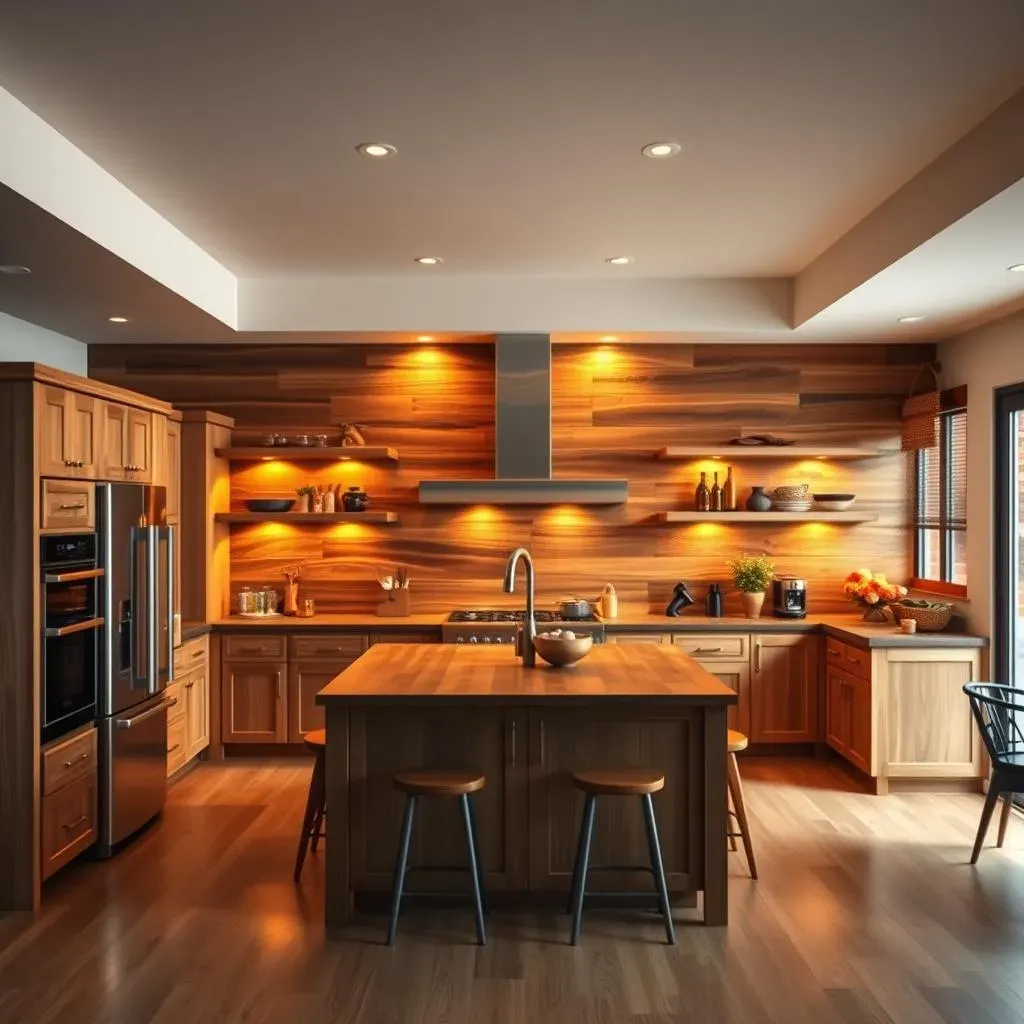Table of Contents
Tired of the same old kitchen walls? Thinking about a change that's both stylish and warm? You're in the right place! We're diving into the world of wood accent wall ideas kitchen, and trust me, it's a game changer. Forget boring paint; wood adds texture, depth, and a touch of nature that can transform your cooking space. This isn't just about slapping some planks on a wall; it’s about creating a focal point that reflects your personality and style. We'll explore why wood is a fantastic choice for your kitchen, the different types of wood you can use, and whether you should try a DIY project or call in a pro. Plus, we'll share tips on how to style and maintain your new, awesome wood accent wall. Get ready to be inspired and maybe, just maybe, start a weekend project that will make your kitchen the envy of all your friends. So, grab a cup of coffee, and let's get started!
Why Choose a Wood Accent Wall in Your Kitchen?

Why Choose a Wood Accent Wall in Your Kitchen?
A Touch of Warmth and Nature
Let's be real, kitchens can sometimes feel a bit sterile, right? All those hard surfaces like countertops and appliances can make the space feel cold. That's where a wood accent wall swoops in to save the day. It brings in this amazing natural warmth that you just can't get from paint alone. It's like inviting a little bit of the outdoors inside, making your kitchen feel cozier and more inviting. I mean, who doesn't want to feel like they're cooking in a charming cabin instead of a stainless-steel box?
It's not just about the visual warmth, either. Wood has a texture that engages your senses in a way that a flat painted wall simply can't. It adds a tactile element to the room, making you want to reach out and touch it. It's a subtle thing, but it makes a huge difference in how you experience the space.
Instant Style Upgrade
so maybe you're not looking for a cabin vibe, but don't think wood is just for rustic kitchens. A wood accent wall is a fantastic way to add a serious dose of style to any kitchen, no matter what your taste is. It's incredibly versatile, so you can make it fit your specific aesthetic. You can go for sleek, modern looks with light woods and clean lines, or you can go bold with darker woods and intricate patterns. It's like adding a piece of art to your kitchen, but way more functional.
It can turn a basic kitchen into a design statement without a full-blown remodel. It's all about that focal point; a wood accent wall draws the eye and gives your kitchen a personality boost.
Style | Wood Type | Feel |
|---|---|---|
Modern | Light Oak, Maple | Sleek, Minimalist |
Rustic | Reclaimed Wood, Pine | Warm, Inviting |
Industrial | Dark Walnut, Distressed Wood | Edgy, Bold |
Adds Depth and Dimension
Let's face it, most kitchen walls are just plain flat, right? A wood accent wall changes all of that. It adds depth and dimension to the room, making it feel more dynamic and interesting. The natural variations in wood grain create shadows and highlights, which give the wall a sense of movement.
This is especially great if you have a smaller kitchen, because it can make the space feel bigger and more open. It's all about tricking the eye, and a wood accent wall is a master of this. Plus, if you have any weird wall imperfections, wood can hide those.
Types of Wood for Kitchen Accent Walls: From Reclaimed to Modern

Types of Wood for Kitchen Accent Walls: From Reclaimed to Modern
Reclaimed Wood: The Storyteller
let's talk reclaimed wood. This stuff isn't just wood; it's a piece of history. Think about it: old barns, factories, even ships – that's where this wood comes from. It has character, imperfections, and a story to tell. It’s like giving your kitchen a unique voice. The beauty of reclaimed wood is that no two pieces are alike. You get knots, nail holes, and a patina that you just can’t recreate with new wood.
If you're going for a rustic or industrial look, reclaimed wood is your best friend. The colors tend to be warm and rich, and the texture is just incredible. It adds a sense of depth and authenticity that can make your kitchen feel like it's been loved for years. It's also a great eco-friendly option, as you're giving old materials a new life.
Modern Woods: Sleek and Stylish
Now, if rustic isn't your thing, don't worry; there are plenty of modern wood options. Think about woods like maple, oak, or birch. These woods have a cleaner, more uniform look and are perfect for creating a sleek and minimalist vibe. They often come in lighter tones, which can brighten up your kitchen and make it feel more spacious.
These woods are also great because they're easy to work with and come in a variety of finishes. You can choose a natural, matte finish for a subtle look, or go for a high-gloss finish for added drama. The key is to choose a wood that complements the other elements in your kitchen, like your countertops and cabinets. You can even get creative with patterns, using different wood tones to create a geometric design.
Wood Type | Color | Style | Best For |
|---|---|---|---|
Reclaimed Wood | Warm, Rich | Rustic, Industrial | Adding character and history |
Maple | Light, Creamy | Modern, Minimalist | Brightening up the space |
Oak | Medium, Versatile | Traditional, Transitional | Versatility and durability |
Birch | Light, Pale | Scandinavian, Modern | Clean, simple designs |
Engineered Wood: The Practical Choice
Let’s not forget about engineered wood. This is a great option if you want the look of real wood but need something more durable or budget-friendly. Engineered wood is made by bonding layers of wood together, which makes it more stable and less prone to warping than solid wood. It also comes in a huge variety of finishes and styles, so you can find something that matches your kitchen perfectly.
Engineered wood is also a good choice if you’re planning a DIY project because it’s easier to cut and install than solid wood. It's often more uniform in color and texture, which some people prefer. Plus, it's a great option for high-moisture areas like kitchens because it's less likely to be affected by humidity. It’s the practical choice without sacrificing style.
DIY vs. Professional Installation of Wood Accent Walls in Kitchen

DIY vs. Professional Installation of Wood Accent Walls in Kitchen
The DIY Route: Tackling It Yourself
so you're feeling handy and thinking about doing this wood accent wall thing yourself? Awesome! It can be super rewarding to create something with your own two hands. Doing it yourself can save you some serious cash, which is always a win. Plus, you get to control every single step of the process, from choosing the wood to the final nail. It’s your kitchen, your vision, and your rules.
But, let’s be real, DIY isn't for everyone. You'll need some basic tools, like a saw, level, and nail gun. And you need to be okay with a little bit of mess and maybe a few mistakes along the way. If you're not comfortable with power tools or if you're not a fan of measuring things precisely, this might not be the best route for you. It's all about knowing your own skill level and being honest with yourself.
Calling in the Pros: When to Hire a Professional
Sometimes, you just need to bring in the experts, and that's totally okay. If you're not super confident in your DIY abilities, or if you're working with a tricky space, a professional installer might be the way to go. They have the experience and the tools to do the job quickly and efficiently, and they can ensure that your accent wall looks perfect.
Hiring a pro can also be a great option if you're using expensive or delicate wood. They know how to handle these materials without damaging them, and they can give you advice on the best way to install them. Sure, it'll cost you more, but it can be worth it for the peace of mind and the professional result.
Factor | DIY | Professional |
|---|---|---|
Cost | Lower | Higher |
Skill Level | Requires some experience | Expertise |
Time | More time consuming | Faster completion |
Tools | Need to have or buy tools | All tools provided |
Making the Right Choice for You
So, how do you decide? It really boils down to your comfort level, budget, and the complexity of the project. If you're on a tight budget and you're not afraid of a little elbow grease, DIY might be the way to go. But if you want a flawless finish and you're willing to pay for it, a professional installer is a solid choice.
It's worth getting a few quotes from professionals before you make your decision, and don’t be afraid to ask them questions about their experience and process. Ultimately, the best option is the one that will make you happiest with your new wood accent wall.
Styling and Maintaining Your Kitchen Wood Accent Wall

Styling and Maintaining Your Kitchen Wood Accent Wall
Styling Your Wood Accent Wall
so you've got your wood accent wall up, and it looks amazing! Now, how do you make it really shine? It's all about choosing the right accessories and décor to complement the wood. Think about the overall style you're going for. If you've got a rustic wall, you might want to add some vintage-inspired pieces or some natural elements like plants. For a modern wall, keep things sleek and simple with minimalist art or some cool geometric shapes.
Don't be afraid to mix and match styles a little bit, but try to keep it cohesive. The idea is to enhance the look of the wood, not to compete with it. You could add some floating shelves to display your favorite kitchen items or hang some artwork that ties in with the wood tones. Lighting is also key – think about how you can use it to highlight the texture and color of the wood.
Style | Accessories | Lighting |
|---|---|---|
Rustic | Vintage signs, pottery, plants | Warm, dimmable lights |
Modern | Minimalist art, geometric shapes | Sleek, bright lights |
Industrial | Metal accents, exposed bulbs | Pendant lights, track lighting |
Maintaining Your Wood Accent Wall
So, you've styled your wall to perfection, and now you want to keep it looking that way. Wood is a natural material, and it needs a little bit of love to stay in top shape. The good news is that it's not too complicated. Regular dusting is your best friend. Use a soft cloth or a vacuum with a brush attachment to get rid of any dust or dirt that accumulates on the surface.
For deeper cleaning, use a damp cloth with a mild soap. Avoid using harsh chemicals or abrasive cleaners, as these can damage the wood. If you've got a finished wood, you might want to apply a wood polish or conditioner every now and then to keep it looking its best. And just like with any other wood surface, try to avoid exposing your accent wall to excessive moisture or direct sunlight, as these can cause warping or fading.
Wrapping Up Your Kitchen Wood Accent Wall Journey
So, there you have it – a complete look at incorporating wood accent walls into your kitchen. From understanding the benefits and choosing the right wood, to deciding whether to DIY or hire a professional, and finally, how to style and maintain your creation. It's clear that a wood accent wall isn’t just a trend, it’s a way to bring warmth and personality into the heart of your home. Remember, the key is to make it your own, so don't be afraid to mix and match styles, play with textures, and most importantly, have fun with it. Your kitchen is about to get a whole lot more stylish, and I can't wait to see what you create. Happy decorating!
